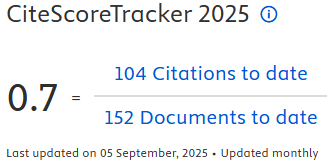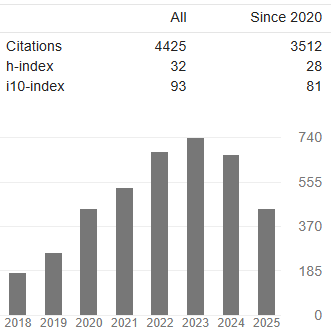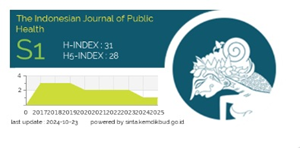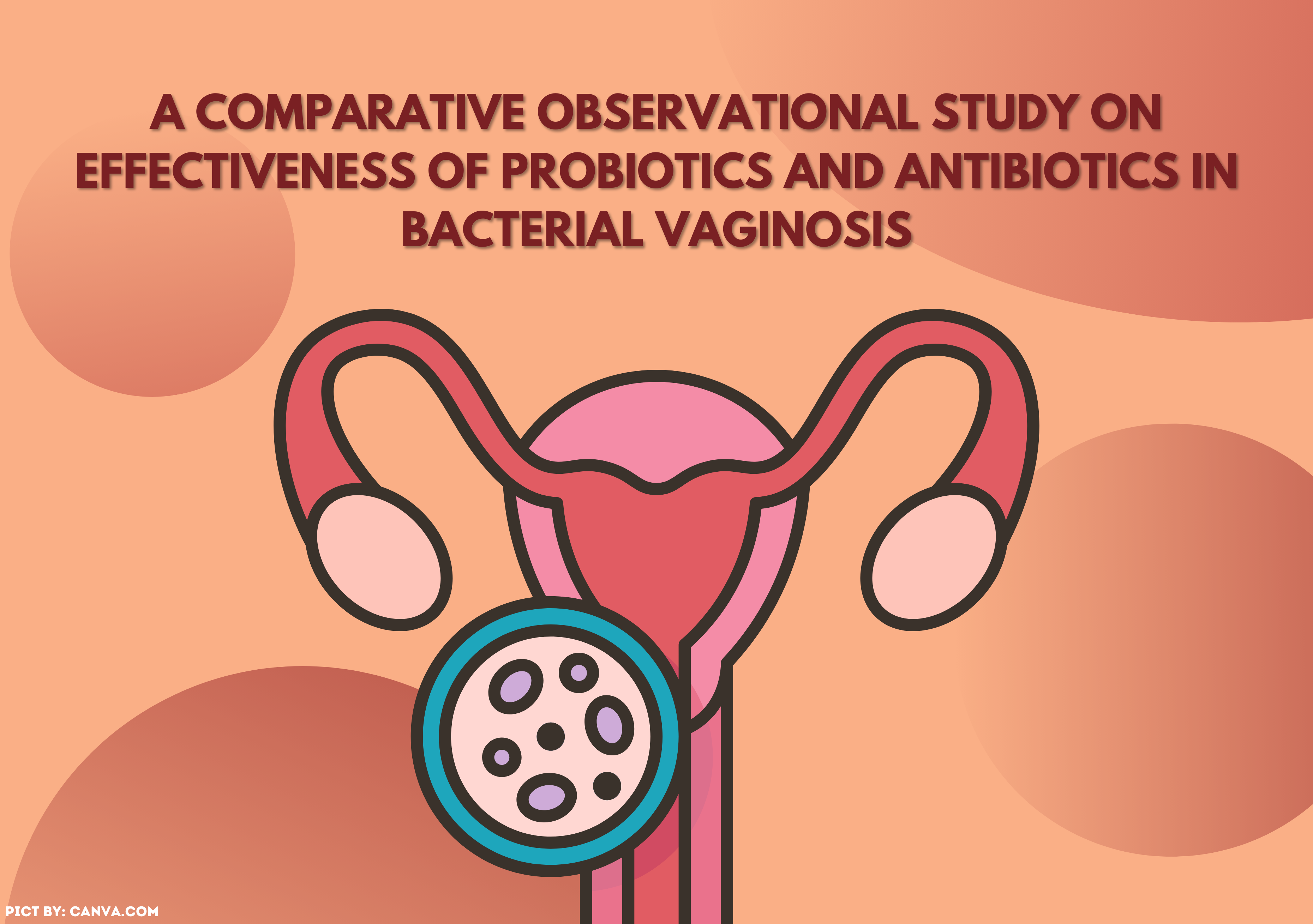PERTUMBUHAN ANAK DARI IBU YANG MENDAPAT SUPLEMEN MULTI-MIKRONUTRIEN DAN ANAK DARI IBU YANG MENDAPAT SUPLEMEN BESI FOLAT SELAMA HAMIL (Studi follow up di Kabupaten Probolinggo, Jawa Timur)
Downloads
Recent studies have shown that maternal multiple micronutrient (MMN) supplementation improved birth weight but there is insufficient evidence that postnatal growth of children from mothers who received MMN are better than children from mother who received iron folic acid (IFA) during pregnancy. The aim of this study was to compare the growth of children aged 16–39 months from mother who received MMN and children from mother who received IFA during pregnancy. The design of this study was nested case control study from cohort study of reconceptional multiple micronutrient supplementation to Improve Maternal Iron Status and Pregnancy Outcomes (Laduni Program). The
subject were 30 children randomly selected from the children of mothers who received MMN, and 30 other children randomly selected from children of mothers who received IFA. Variables observed in this study were birth weight from the health records, height-for-age z-scores (HAZ), weight-for-age z-scores
(WAZ), and body mass index-for-age z-scores (BMIAZ) through direct measurements; nutrient intake from 2 x 24 hours dietary recalls. The average of children's age in this study (±SD) was 28 ± 5,3 months. There is no difference in HAZ, WAZ, BMIAZ, and nutrient intake between the children of mothers who
received MMN and children of mothers who received IFA. Most of the nutrient intake were inadequate as the diet were unbalanced and monotonous. Conclusion: maternal MMN supplementation during pregnancy has no effect on growth of 16–39 month old children if the nutrient intake is inadequate.
Children should eat a variety of diet sufficienly for an optimal growth.
Keywords:growth, maternal multiple-micronutrient, iron folic acid, children
ACC/SCN. 2000. Fourth Report on the World Nutrition Situation. Geneva: ACC/SCN in collaboration with IFPRI.
Adriani, M., Wirjatmadi B. 2012. Peranan Gizi dalam Siklus Kehidupan. Jakarta: Kencana.
Andersen, L.G., L. í„ngquist, J.G. Eriksson, T. Forsen, M. Gamborg, C. Osmond, J.L. Baker, T.I.A. Sorensen, 2010. Birth weight, Childhood Body Mass Index and Risk of Coronary Haeart Disease in Adults: Combined Historical Cohort Studies. PLos One, (5): e14126.
Angelo, G., C.M. Weaver, 2012. Micronutrients and Bone Health. Linus Puling Institute Oregon State University (online), (http://lpi.oregonstate.edu/mic/micronutrients-health/bonehealth#reference22) diakses pada tanggal 3 Februari 2016.
Arimond, M., M.T. Ruel, 2004. Dietary Diversity Is Associated with Child
Nutritional Status: Evidence from 11 Demographic and Health Surveys. The Journal of Nutrition, 10 (134):2579–2585.
Bellows, L., R. Moore, 2012. Fat-Soluble Vitamins: A, D, E, and K. Colorado State University Extension (online), (http://extension.colostate.edu/topic-areas/nutrition-food-safety-health/fat-soluble-vitamins-a-d-e-and-k-9-315/) diakses pada tanggal 3 Februari 2016.
Branca, F., M. Ferrari, 2002. Impact of Micronutrient Deficiencies on Growth: The Stunting Syndrome. Annals of Nutrition & Metabolism, (46): 8-17.
Devakumar, D., S.S. Chaube, J.C.K. Wells, N.M. Saville, J.G. Ayres, D. S. Manandhar, A. Costello, D.Osrin, 2014. Effect of Antenatal Multiple Micronutrient Supplementation on Anthropometry and Blood Pressure in Mid-childhood in Nepal: Follow-up of A Double-Blind Randomized Controlled Trial. Lancet Glob Health, (2): e654-e663.
Ensminger, A.H., M.E. Ensminger, J.E. Konlande, J.R.K. Robson, 1994. Foods & Nutrition Encyclopedia 2ndedition volume 1. Washington D.C.: CRC Press.
Fall, C.H.D., D.J. Fisher, C. Osmond, B.M. Margetts, 2009. Multiple Micronutrient Supplementation during Pregnancy in Low-Income Countries: A Meta-analysis of Effects on Birth Size and Length of Gestation. Food & Nutrition Bulletin, (30): S533–S546.
FAO. 2003. Measurement and Assessment of Food Deprivation and Undernutrition. Rome: Food And Agriculture Organization of The United Nations, (Online), (http://www.fao.org/docrep/005/y4249e/y4249e0d.htm), diakses pada tanggal 29 Oktober 2015.
Golden, M.H., 2009. Proposed Recommended Nutrient Densities for Moderatly Malnourished Children. Food & Nutrition Bulletin, (30): S267-S342.
Haider, B.A., M.Y. Yakoob, Z.A. Bhutta, 2011. Effect of Multiple Micronutrient Supplementation During Pregnancy on Maternal aand Birth Outcomes. BMC Public Health, (11): S19.
Hoddinott , J., J.R. Behrman, J.A. Maluccio, P. Melgar, A.R. Quisumbing, M. Ramirez-zea, et al., 2013. Adult Consequences of Growth Failure in Early Childhood. The American Journal of Clinical Nutrition, 98(5): 1170-1178.
Hoffman, D.J., A.L. Sawaya, I Verreschi, K.L. Tucker, S.B. Roberts, 2000. Why are nutritionally stunted children at increased risk of obesity? Studies of metabolic rate and fat oxidation in shantytown children from Sí£o Paulo, Brazil. The American Journal of Clinical Nutrition, (72): 702–707.
Huy, N.D., L.T. Hop, R. Shrimpton, C.V. Hoa, 2009. An Effectiveness trial of Multiple Micronutrient Supplementation during Pregnancy in Vietnam: Impact on Birthweight and on Stunting in Children at around 2 Years of Age. Food and Nutrition Bulletin, 30(4) (supplement): S506-S515.
Jahari, A.B., 2008. Masalah Gagal-Tumbuh pada Anak Balita Indonesia Masih Tinggi: Adakah yang "Kurang” dalam Kebijakan Program Gizi di Indonesia? Gizi Indon, 31 (2): 123-138.
Kemenkes, 2013. Profil Kesehatan Indonesia 2012. Jakarta: Kementrian Kesehatan Republik Indonesia
Khan, A.I., I. Kabir, E.C. Ekstrom, K.A. Monemi, D.S. Alam, E.A. Frongillo, M. Yunus, A. Arifeen, L.A. Persson, 2011. Effects of Prenatal Food and Micronutrient Supplementation on Child Growth from Birth to 54 Months of Age: A Randomized Trial in Bangladesh. Nutrition Journal, (10): 134.
Kusharisupeni, 2002. Growth Faltering pada Bayi di Kabupaten Indramayu Jawa Barat. Makara, Kesehatan, 6 (1): 1-5
Lifshitz, F., 2009. Nutrition and Growth. Journal of Turkish Pediatric Endocrinology and Diabetes Society, 1 (4): 157-163.
Lifshitz, F., S. Friedman, M.M. Smith, C. Cervantes, B. Recker, M. O'Connor, 1991. Nutritional Dwarfing: A Growth Abnormality Associated with Reduced Erythrocyte Na+, K+-ATPase activity. Am J Clin Nutr. (54):997-1004.
Marmi, 2011. Asuhan Kebidanan pada Masa Antenatal. Yogyakarta: Pustaka Pelajar.
Nainggolan, L., 2015. Double Trouble: Stunted Children at Higher Risk of
Obesity. Medscape News & Perspective (online (http://www.medscape.com/viewarticle/845132#vp_3) diakses pada
tanggal 3 Februari 2016.
Olivera, M.I., G.E. Compagnucci, C.V. Compagnucci, C.E. Lezón, P. Mandalunis, S.I. Hope, L.G. Bianciotti, J.C. Elverdrin, R.M. Alippi, M.S. Vatta, P.M Boyer, 2008. Hypothalamic Noradrenergic Hyperactivity and Detrimental Bone Status in an Animal Model of Nutritional Growth Retardation. The Open Nutrition Journal, (2):29-36.
Osmond, C. & D.J.P. Barker, 2000. Fetal, Infant, and Childhood Growth Are Predictors of Coronary Heart Disease, Diabetes, and Hypertension in Adult Men and Women. Environmental Health Perspectives, (108): 545-553.
Peraturan Menteri Kesehatan Republik Indonesia Nomor 75 Tahun 2013 tentang Angka Kecukupan Gizi yang Dianjurkan bagi Bangsa Indonesia. Diakses melalui http://gizi.depkes.go.id/download/Kebijakan%20Gizi/PMK%2075-2013.pdf.
Putri, D.S.K., N.H. Utami, 2015. Nilai Batas Berat Lahir sebagai Prediktor Kejadian Stunting pada Anak Umur 6–23 Bulan di Indonesia. Penelitian Gizi dan Makanan, 38(1):79–85.
Rah, J.H., N. Akhter, R.D. Semba, S. de Pee, M.W. Bloem, A.A. Campbell, R. Moench-Pfanner, K. Sun, J. Badham, K. Kraemer, 2010. Low Dietary Diversity is a Predictor of Child Stunting in Rural Bangladesh. European Journal of Clinical Nutrition, (64): 1393-1398.
Sanders, T., P. Emery, 2003. Molecular Basis of Human Nutrition . Taylor & Francis Inc. New York: 104-117.
SCN, 2004. 5th Report on the World Nutrition Situation: Nutrition for Improved Development Outcomes. United Nations System (online), (http://www.unsystem.org/scn/Publications/AnnualMeeting/SCN31/SCN5Report.pdf) diakses pada tanggal 3 Januari 2015.
Simbolon, D., 2013. Model Prediksi Indeks Massa Tubuh Remaja Berdasarkan Riwayat Lahir dan Status Gizi Anak. Jurnal Kesehatan Masyarakat Nasional 1(8): 19–27.
Soetjiningsih, 2012. Tumbuh Kembang Anak. Jakarta: Penerbit Buku Kedokteran EGC.
Sudiman, H., 2008. Stunting Atau Pendek: Awal Perubahan Patologis Atau Adaptasi Karena Perubahan Sosial Ekonomi yang Berkepanjangan. Media Litbang Kesehatan, 1(18):33–43.
Sumarmi, S. 2014. Preconceptional Supplementation of Multiple Micronutriens to Improve Maternal Iron Status and Pregnancy Outcomes. Report. Surabaya: Universitas Airlangga.
Thurnham, D.I, 2013. Adequate Nutrition for Children 24 to 59 Months. In Adequate Nutrient Intakes for Infancy. Sight and Life, 27 (2): 32-42.
Wang, W., H. Yan, L. Zeng, Y. Cheng, D. Wang, Q. Li, 2012. No Effect of Maternal Micronutrient Supplementation on Early Childhood Growth in Rural Western China: 30 Month Follow-Up Evaluation of A Double Blind, Cluster Randomized Trial. European Journal of Clinical Nutrition (66): 261-268.
WHO, 2013. Childhood Stunting: Context, Causes and Consequences. (http://www.who.int/nutrition/events/2013_ChildhoodStunting_colloquium_14Oct_ConceptualFramework_colour.pdf) diakses pada tanggal 7 Desember 2014.
Wijayanti, R. 2015. Pertumbuhan dan Perkembangan Motorik Anak dari Ibu yang Mendapat Suplemen Multimikronutrien dan Anak dari Ibu yang Mendapat Suplemen Besi Folat. Skripsi tidak diterbitkan. Surabaya: Universitas Airlangga.
- The authors agree to transfer the transfer copyright of the article to The Indonesian Journal of Public Health effective if and when the paper is accepted for publication.
- Authors and other parties are bound to the Creative Commons Attribution-NonCommercial-ShareAlike 4.0 International License for the published articles, legal formal aspect of journal publication accessibility refers to Creative Commons Attribution-NonCommercial-ShareAlike 4.0 International License (CC BY-NC-SA), implies that:
- Attribution ” You must give appropriate credit, provide a link to the license, and indicate if changes were made. You may do so in any reasonable manner, but not in any way that suggests the licensor endorses you or your use.
- NonCommercial ” You may not use the material for commercial purposes.
- ShareAlike ” If you remix, transform, or build upon the material, you must distribute your contributions under the same license as the original.































